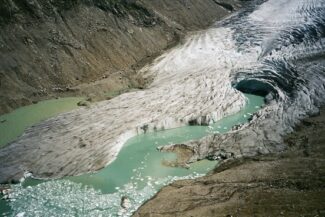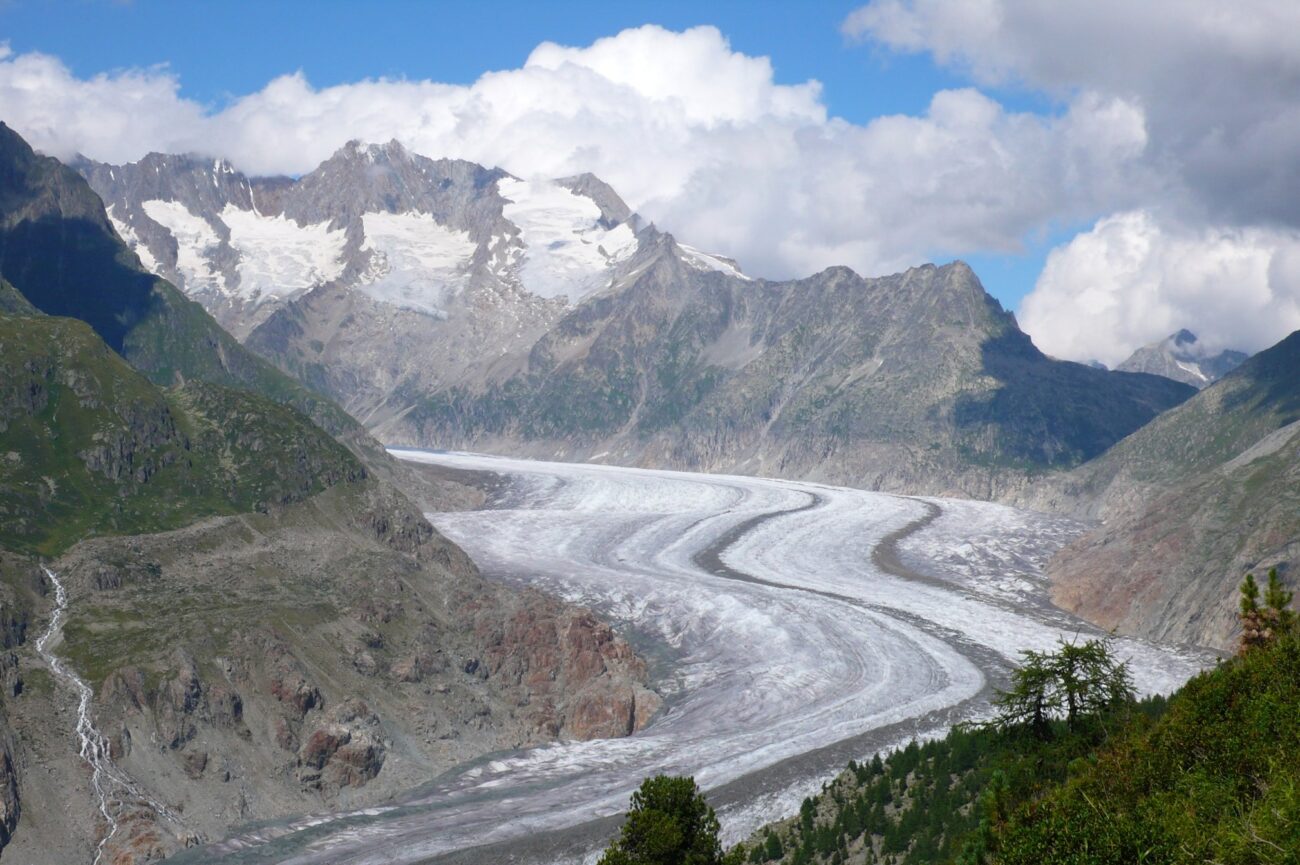Michael Bütler can see mountains and glaciers from behind his house. Spurred by his connection with the mountains and the consequences he knows glaciers will face, Bütler became a lawyer specializing in spatial planning and the protection of nature and the environment. “I only take cases where I can represent organizations or people who envision those environmental goals,” he said in an interview with GlacierHub.
Bütler runs a law firm focusing on spatial planning and environmental law in Zurich. This past March, he delivered a seminar on the legal dimensions of glaciers before Zurich’s glaciology group. “It’s really a sad development that in Switzerland, the climate has changed very rapidly and strongly, and the effect is very real. And we lose a lot of snow and ice each year, which is hard to take,” he said. “Some 40 years ago, it was a completely different world here.”
Bütler has also written extensively on wide-ranging aspects of environmental law, from livestock guardian dogs to ski resorts to traffic to water protection—and, of course, glaciers. Since he published his little-known book, “Gletscher im Blickfeld des Rechts” (“Glaciers in the Legal Field”) nearly 20 years ago, he continues to speak about the legal protection of glaciers, which are particularly significant during the International Year of Glaciers’ Protection.
But what rights do glaciers worldwide—or any natural phenomena, for that matter—have? The answer varies globally. While the rights of nature movement has reached many countries, there remains no international standard.
Rights of nature are not just a theoretical concept. Some countries have adopted rigorous rights of nature doctrines—Ecuador was the first to do so, in 2008. Elsewhere, particular elements of nature have been granted legal personhood. But while glaciers have run for president and been mourned at funerals, the only glaciers ever to have been granted legal personhood are the Gangotri and Yamunotri glaciers in India in 2017.
Founder and faculty director of Columbia’s Sabin Center for Climate Change Law Michael Gerrard explained that when states grant environmental rights, they are typically anthropocentric, or written in terms of humans having a right to a clean environment rather than saying the environment has rights on its own. “The idea of the rights of nature receives a fair amount of academic attention, and I have come across many students over the years who are interested in it,” said Gerrard. “But as a lawyer, I haven’t found it very useful.”
The rights of nature concept in the U.S. has been under academic scrutiny for some time. In the 1972 Sierra Club v. Morton case, for example, Justice Blackmun penned a surprising dissent, in which he quoted law professor Christopher Stone’s essay on the rights of nature. If a person could represent a boat, or a corporation in a court of law, asked Stone, why not a tree, or a river?
The question was raised again in the U.S. this past March, when a bill was re-introduced in the New York State Assembly granting the Great Lakes and all other bodies of water in New York the fundamental rights “to exist . . . free from human violations.” This state proposal came amid a national backdrop of the federal government gutting the National Park Service, the EPA rolling back bedrock environmental regulations, and an executive order allowing commercial fishing in one of the world’s largest ocean reserves.
Though people may not associate the U.S. with glaciers, they exist in 10 states and are shrinking significantly due to climate change. As the rights of nature discussion is revived in the U.S. and abroad, it is relevant to consider how more glaciated countries protect their glaciers and what legal options exist to protect glaciers in the U.S.
Among Alpine countries, Switzerland has the most glaciers, and its citizens have employed a number of attempts to protect them in recent years. Like other glaciers globally, Swiss glaciers are retreating, endangering surrounding communities. Just this past spring, a Swiss village was buried in glacial debris and flooding from glacier melt. These are the kinds of issues Bütler’s firm addresses.

Glaciers, Bütler explained, are explicitly mentioned in Switzerland’s Civil Code, which is over a century old, though laws regarding them have changed significantly over the years. “In earlier centuries, it was possible to become an owner of even glaciated areas. You had to prove that you were the owner.” But today, glaciers are ownerless land, instead often falling under the category of “public property for common use.”
In Switzerland, environmental associations have the right to appeal in cases concerning the environment. “They can file legally in courts to ensure that the Swiss environment is respected—wildlife, mountains, landscapes, grounds, rivers, lakes,” Bütler explained. However, Bütler is now concerned that the political pressure to use glacier meltwater for hydropower or glaciated areas for tourist facilities might be strong enough to weaken the right to appeal. “This would be a mistake, because glaciers do not have a voice,” said Bütler. “They cannot fight for themselves against human activities, and against negative influence or damage.”
Bütler is not convinced that granting legal personhood to glaciers is the way forward. “There are other possibilities,” he explained. “If you give environmental associations the power to represent the interests of nature, this is also quite good. You can ensure those interests are respected in procedures.”
Gerrard is similarly dubious about the utility of granting legal personhood to nature in the U.S. “In the first place, U.S. courts tend to see themselves as having very limited roles. They don’t lightly create rights,” said Gerrard. He added, “U.S. courts try to link their decisions to statutes, to constitutional provisions, or to longstanding common law doctrines, and the rights of nature don’t fit within any of those categories.”
Gerrard also cautioned that giving one particular natural feature precedence would be challenging. “There’s no law that says preservation of the sort of creatures that are not endangered takes precedent, or that aesthetics take precedent, or any other one thing takes precedent,” he explained.
Instead of trying to establish rights of nature, Gerrard suggested people focus on human injury in relation to nature. “Most of the negative climate impacts we worry about hurt people,” said Gerrard, adding, “U.S. courts want to listen to the effect on and the way that damage to a natural feature could hurt people, not the damage to the natural resource in its own right.”
Especially when it comes to glaciers, which people may see as remote and disconnected, the law is an avenue through which lawyers and policymakers can demonstrate how glaciers are in fact deeply intertwined with human life. In Switzerland, Bütler shows how though the legal codes that developed in a time before climate change are limited in their ability to address contemporary challenges , they nonetheless contain elements that can be leveraged to confront our new realities.
Though each country’s legal context is critical in assessing how best to legally protect natural features, impact on human beings may be one uniting strategy. “All the lawsuits that have been brought on climate change do exactly that. They emphasize the effect on people,” said Gerrard.
Source link
Guest news.climate.columbia.edu

